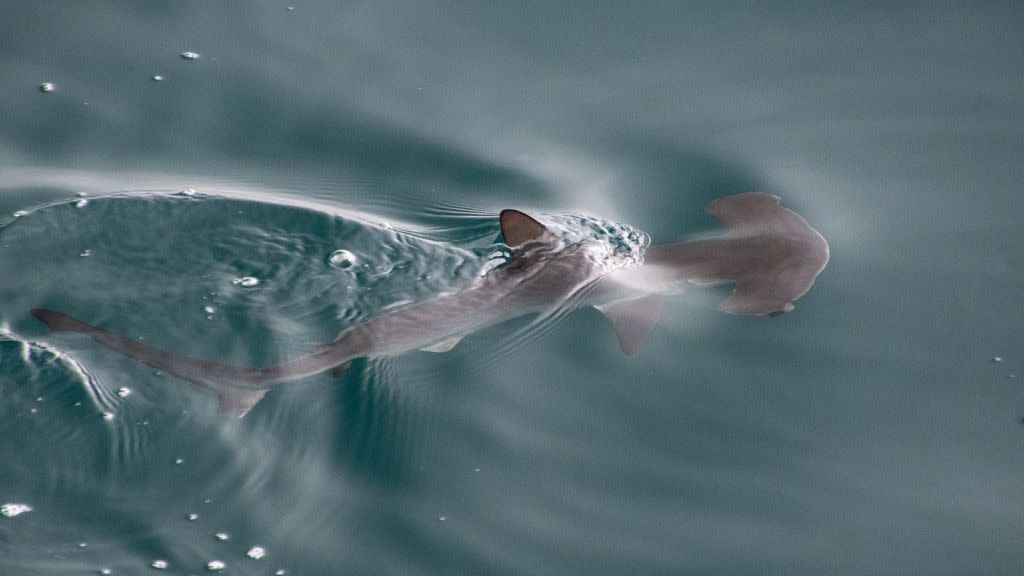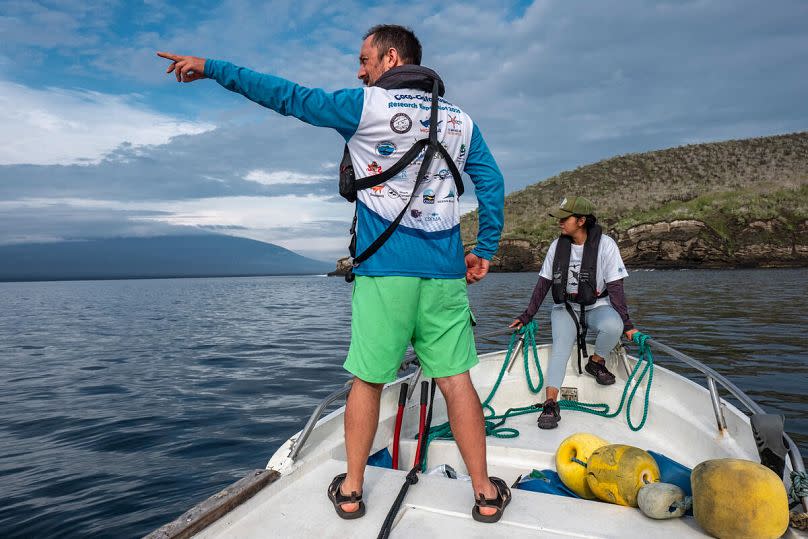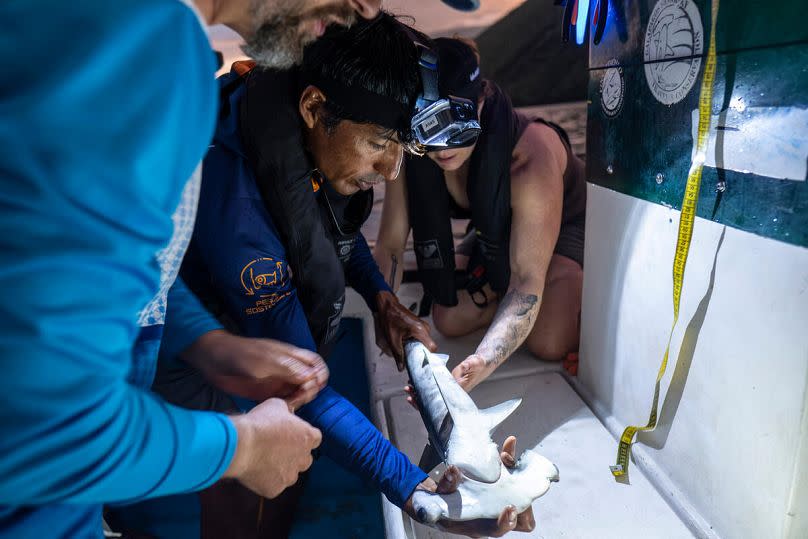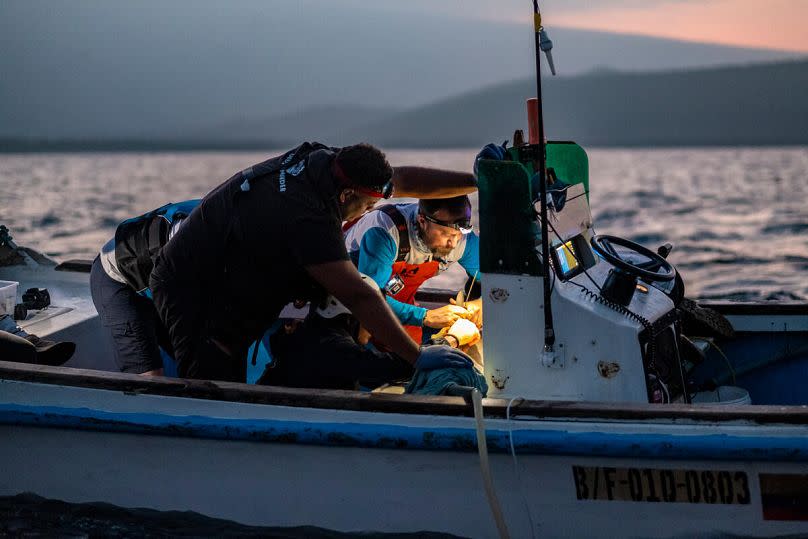‘An amazing discovery’: Scientists hit upon first nursery for hammerhead sharks in the Galápagos

Scientists have discovered what could be the first known smooth hammerhead shark nursery in the Galápagos.
The vulnerable shark species - so-called for its elongated head which forms a straighter curve than the scalloped hammerhead - is rarely spotted in the marine reserve.
But after observing several young pups in a small bay at Isabela Island, the Greenpeace expedition team believe they have found a breeding ground in the archipelago - and they’re rightly excited.
“This is an amazing discovery!” says lead scientist Alex Hearn from Universidad San Francisco de Quito in Ecuador and marine conservation research organisation MigraMar. “Not only is this species rarely reported here, but in this bay we have found numerous young-of-the-year, suggesting that this might be a nursery site.”

To be confirmed as such, three criteria need to be met. There must be more shark pups here than in surrounding areas; the sharks must reside at the site for extended periods of time; and the site must be used by successive generations of pups.
Though it will take more monitoring to certify the site, the findings from Greenpeace’s six-week expedition are testament to the extraordinary biodiversity of the Galápagos Marine Reserve.
Paola Sangolquí, marine coordinator at Jocotoco Conservation Foundation, says he hopes all the information gathered will help make a strong case for the ratification of the High Seas Treaty and the protection of migratory species, “who don’t know about boundaries.”
Wild orangutan uses a medicinal plant to treat a wound in 'first time' observation by scientists
Is hake's remarkable recovery in the Atlantic a sign of hope for our oceans?
What does a gathering of hammerhead sharks have to do with the High Seas Treaty?
UN countries made a landmark agreement to protect life in the high seas - vast areas of the ocean that lie outside national boundaries - last year.
The High Seas Treaty will create marine protected areas (MPAs) to limit fishing activities, shipping routes and exploratory activities like deep-sea mining.
This supports the ‘30 by 30’ goal established at the UN biodiversity conference in 2022 (COP15), to protect 30 per cent of the world’s oceans and land for nature by 2030.
89 countries have signed the treaty so far, but it won’t come into force until 60 countries sign and ratify it, and only four countries have followed through with this legally-binding step so far: Palau, Chile, Belize and the Seychelles.
The EU voted to ratify the treaty in March, sending an “important signal” to the rest of the world, in the words of Rebecca Hubbard, director of the High Seas Alliance campaign group.

By studying the smooth hammerhead shark’s movements, Greenpeace hopes to identify areas outside the protected waters of the Galápagos that should be made safe for the species.
“If we can learn why the smooth hammerhead pups use this particular location, we can make predictions about where else we might find them across the region,” explains Hearn.
“Here in Galapágos, the sharks are protected, but this is not the case when they, as a migratory species, leave the reserve. If we can map the sharks’ key habitats, we can take steps to push for more protected areas in the high seas, where these sharks migrate, to avoid them being caught in the first place.”
Ocean protection and solar balconies: Positive environmental stories from 2024
European sharks 'in danger and not dangerous,' warns marine expert
Tagging the first smooth hammerhead shark in the Galápagos
The scientists were also able to fit a satellite tracking device to a subadult smooth hammerhead for the first time in the Galápagos.
Named Alba after actress and ocean conservation advocate Alba Flores - who was on board the Greenpeace ship Arctic Sunrise during its first week - the female shark’s travels will be closely watched.
As the scientists track Alba’s journey, they will be able to assess her vulnerability if she leaves the Galapágos Marine Reserve.

“Previously, it was impossible to protect this high seas area where these sharks migrate. But now, using the recently won UN Global Ocean Treaty, governments have a chance to boost protection of the migratory species in this region and provide a powerful example to the rest of the world of how to protect the high seas,” adds Sophie Cooke, Arctic Sunrise expedition lead at Greenpeace UK.
Protecting sharks is crucial, and not only for their own sake. The top predators help maintain the right balance of fish populations in the ocean, thereby preventing overgrazing and enriching biodiversity.
Finely attuned to changes in their environment, hammerhead sharks are also indicator species of the health of marine ecosystems.
Hammerhead sharks are particularly vulnerable to longlining, and fishing fleets today operate just outside the borders of the reserve.


